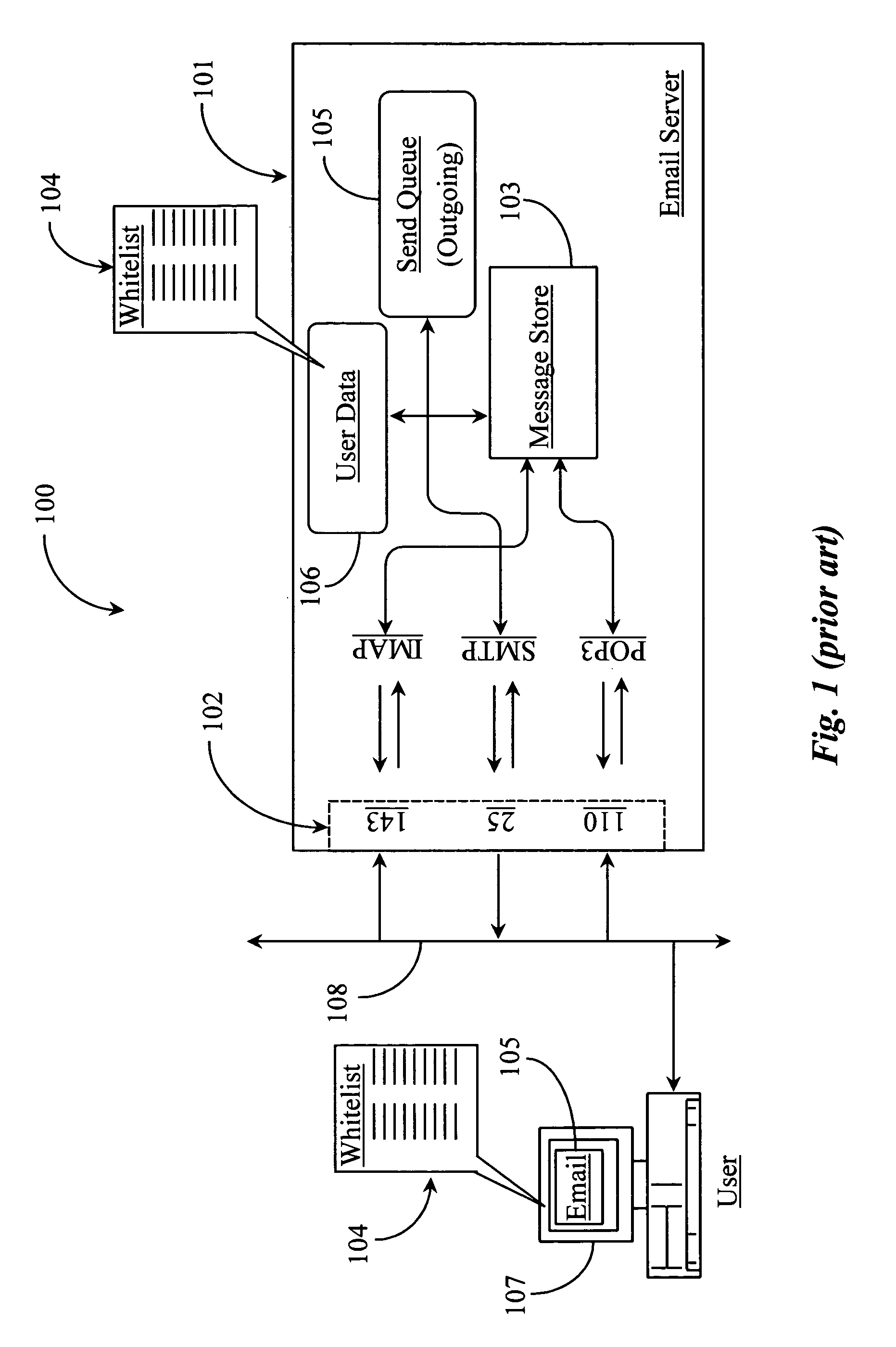System for reclassification of electronic messages in a spam filtering system
a filtering system and electronic message technology, applied in the field of communication services, can solve the problems of difficult to build and maintain whitelists, and inability to make good decisions
- Summary
- Abstract
- Description
- Claims
- Application Information
AI Technical Summary
Benefits of technology
Problems solved by technology
Method used
Image
Examples
Embodiment Construction
[0022]In accordance with one embodiment of the present invention, the inventor provides a system for runtime classification of Spam sent in email based on evaluation of user account activity history. The methods and apparatus of the invention are described below in enabling detail according to various embodiments.
[0023]FIG. 1 is a block diagram illustrating a whitelist filtering architecture according to prior-art. As was described in the background section of this specification, whitelist filtering, as it relates to email, typically involves logically or physically blocking any emails addressed to a particular user if the listed address or sender address of the email is not listed in a whitelist of trusted contact addresses.
[0024]The prior-art architecture illustrated in FIG. 1 shows whitelist filtering between a user station 107 and an email server 101 using a whitelist 104. User station 107 may be a computer system that accesses email server 101 by physically connecting to the se...
PUM
 Login to View More
Login to View More Abstract
Description
Claims
Application Information
 Login to View More
Login to View More - R&D
- Intellectual Property
- Life Sciences
- Materials
- Tech Scout
- Unparalleled Data Quality
- Higher Quality Content
- 60% Fewer Hallucinations
Browse by: Latest US Patents, China's latest patents, Technical Efficacy Thesaurus, Application Domain, Technology Topic, Popular Technical Reports.
© 2025 PatSnap. All rights reserved.Legal|Privacy policy|Modern Slavery Act Transparency Statement|Sitemap|About US| Contact US: help@patsnap.com



